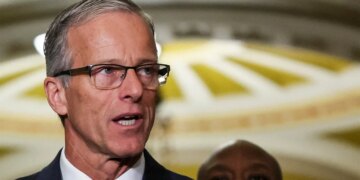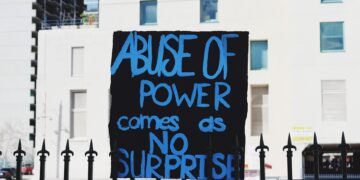
The American consumer is tapped out. His savings are gone. His real after-inflation and after-tax wages have dropped precipitously and are now barely keeping up with inflation. And his credit cards are close to being maxed out.
That explains the slowdown showing up nearly everywhere, from housing to restaurant visits, to unemployment claims, to lackluster job growth. It’s gotten so bad that 80 percent of consumers how consider fast food — a la MacDonald’s — as a luxury. And 60 percent of them are eating out less and eating at home more.
During Covid, consumers became savers, limiting restaurant visits and cutting vacation plans. They stashed away a staggering $2.1 trillion.
That’s all gone. In March this year, their savings rate turned negative by $72 billion.
A year ago, the average consumer’s wage was growing nicely, by more than five percent after inflation on an annualized basis. Today, wages are barely keeping up with inflation.
So he is piling up debt by using his (wrongly named) credit cards. The total credit-card debt incurred by Americans is now approaching a staggering $2 trillion.
But that has hit a wall. Credit-card delinquencies are up 50 percent over a year ago.
The slowdown is showing up in the government’s numbers. Last fall, the Bureau of Economic Analysis (BEA) reported the economy was growing at nearly five percent annually. In the fourth quarter of last year, the gross domestic product (GDP) dropped to 3.4 percent. The first quarter this year, it dropped still further, to just 1.6 percent.
And the second quarter just ending? Investment bank Goldman Sachs just reduced its own estimate from an overly generous two percent to a still optimistic 1.9 percent.
The New American pointed out the faux job numbers in the employment report from the Bureau of Labor Statistics (BLS) last week, which boasting of 272,000 new jobs for May. The real numbers were a loss of more than 400,000 jobs. And those were mostly Americans who lost their jobs to illegals flooding the country. As a result, the unemployment rate is increasing.
The impact of the consumer staying at home and out of the malls is showing up in the unhappy fact that 2,600 retail stores have closed so far this year. At that rate, assuming no acceleration, more than 8,000 stores will have closed by the end of the year.
Banks are also closing branches at a record rate. So far this year, banks have shuttered more than 1,500 of them.
Restaurants are closing unprofitable outlets, and some are going bankrupt. As one example, Applebee’s closed 46 of its restaurants last year, with another 35 scheduled to be shuttered this year. And Boston Market, which had nearly 1,000 locations, is now facing bankruptcy.
New housing starts were off nearly 20 percent in May from a year ago. Homebuilder confidence, not surprisingly, hit a six-month low this month. And permits for future housing construction fell in May to the lowest level since June 2020, four years ago, the bottom of the pandemic.
Factory output, according to the Philadelphia Fed, was flat in May.
And then there’s the commercial real-estate market. With billions of dollars of loans coming due for renewal, vacancies falling and interest rates rising, high end developers are facing challenges of their own.
The sugar high from the faux Bidenomics program of deficit spending and new money printing to boost the economy is now over. Monmouth University reported that the economy is now the greatest concern among Americans, and that fewer than one in 10 said that their financial situation was “improving.” Half of those polled said that Bidenomics has hurt their finances.
The American consumer is tapped out.
Related articles:
Poll: Under Bidenomics, Half of Americans Struggling Financially Just to Keep Up
Shop For Night Vision | See more…
Shop For Survival Gear | See more…
-
Sale!

Mesh Shooting Hunting Vest with Multi Pockets
Original price was: $59.99.$39.99Current price is: $39.99. Add to cart -
Sale!

Quick Slow Release Paramedic Survival Emergency Tourniquet Buckle
Original price was: $14.99.$7.99Current price is: $7.99. Add to cart -
Sale!

Japanese 6 inch Double Edged Hand Pull Saw
Original price was: $19.99.$9.99Current price is: $9.99. Add to cart

































 Reaction & Commentary
Reaction & Commentary

















